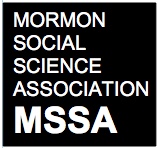Q: I will begin a PhD program soon on the subject of Mormon myth and sacred narrative. I wonder if I could be pointed toward any research which might have been done previously on the place of myth as stories with culturally formative power that might be categorized broadly under headings like Restoration, Revelation, Missionary Stories, and stories of healing and encouragement. These would include stories on the Pre-Existence/Pre-Mortal Life, the First Vision, the Westward Trek/Pioneer Narrative, The Plan of Salvation/Personal missionary narratives, etc. Any thoughts on previous studies that have touched on myth, story, narrative, or folklore in these areas would be appreciated.
A: We have two responses to this question. The first comes from Steven Olsen:
“My Masters paper at the University of Chicago (Anthropology, 1978) adapted a Levi-Straussian ‘structuralist’ approach to understand the cultural logic of the sacred Mormon narrative we call “The Joseph Smith Story.” A readable version of that study appears in a Dialogue article from the 1980s with the pretentious title, “Joseph Smith and the Structure of Mormon Identity.” This study will be of value to the extent that John is concerned about theory and method in his own study; it illustrates a conception and approach to the study of sacred narrative that, I believe, bears some fruit. There are certainly other possible approaches, including those used by Bert Wilson, Eric Eliason, Meg Brady, and others in their study of Mormon narrative, oral and written. From the perspective of what Clifford Geertz might call, if he were still alive, “History as a Cultural System,” there are a couple of obscure articles that may be helpful, “The Theology of Memory: Mormon Historical Consciousness” in a recent FARMS Review and “Historic Sites as Institutional Memory,” in the proceedings of a BYU symposium several years ago, both of which were written by me. Additionally, at an ASCH conference a few years ago, Stephen Stein delivered what I remember as a masterful set of preliminary reflections on the implications of Mormonism’s being a literate religion, i.e., one that is grounded in the authority of written documents, some of which record historical experience. I have never seen it in print, but he would advance our understanding of Mormonism considerably if he would do so.”
Armand Mauss also wrote a response:
“If you are in Utah, you are located right in the center of the best collections of Mormon myth and folklore in the world at the three major universities in Utah. He should start by consulting the massive bibliography compiled a decade ago by James B. Allen, Ronald W. Walker, and David L. Whittaker (editors and compilers), STUDIES IN MORMON HISTORY, 1830 – 1997 (University of Illinois Press, 2000), which will be found in the reference section of any decent library, especially in Utah. In that bibliography will be found numerous sections devoted to myth and folklore, especially on pages 651-654, 799-800, and 1095-1096. The founder and earliest collector of Mormon myth and folklore was the late Austin Fife (often with his wife Alta), so John might begin by browsing through Fife’s work, which appears in a couple of books and numerous articles. Fife’s successor would be William A. (“Bert”) Wilson, still very much alive as English professor emeritus at BYU, and author of many great articles. An up-and-coming younger scholar specializing in Mormon myth and folklore is Eric Eliason, also in the BYU English Dept. Morehead would do well to seek out Wilson and Eliason for interviews. They would give him a lot of useful guidance, not only bibliographical but also methodological. But John should do considerable browsing through the work listed in the above-mentioned bibliography before seeking out Wilson or Eliason.”
Update: Mon, 2009-04-13 10:10 — Shawn Bennion
I would also suggest contacting Eric Eliason, who has an interest in Mormon Folklore. I recall his comment that the category of “3 Nephite” Stories is among the largest in all of the study of folklore. The L. Tom Perry Special Collections at BYU has a large collection of Mormon folklore, often containing transcripts of interviews.

